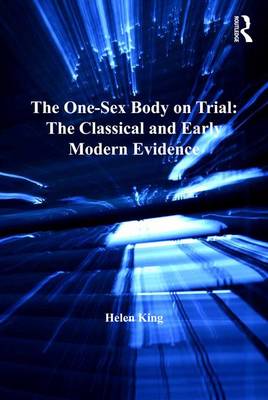By Helen King (Regular Contributor)

John William Waterhouse, Pandora (1896)
In the beginning, there was – a man. Later, there was also a woman. That’s the basic plot of both the Judaeo-Christian and the ancient Greek creation stories, in which woman is a late arrival on the scene. In the first of these Mediterranean traditions, woman is made from man – specifically, from Adam’s rib (and by the way, men don’t have fewer ribs than women, even though I’ve been told by some Christians that they do). In the second, woman is made from mud.
Making Eve
Of course, it’s not quite that simple. Taking the Genesis creation story first, there are in fact two different accounts of creation in the first couple of chapters: the New Revised Standard Version of the Bible even inserts a sub-heading, ‘Another account of the creation‘. While the first version goes through all six days of creation one by one, culminating in humankind, the second version has the whole of creation made in a single day – ‘In the day that the Lord God made the earth and the heavens…’ In the first version, plants are on Day 3, but in the second version there are no plants yet because ‘there was no one to till the ground’ until after Adam had been made. Version 1, plants before people: version 2, people before plants.
In the first of these versions, God created:
humankind in his image,
in the image of God he created them,
male and female he created them (Genesis 1:27)
It’s only in the second account that we come to the more familiar story that God made a man out of the dust of the ground and then, later on in the creation process, made from this man’s rib the first woman, because ‘it is not good that the man should be alone’ (Genesis 2:18). In the first account, both sexes are equally in ‘the image of God’, while the second emphasizes the unity of their flesh as both origin and goal, ending with a man ‘clinging to his wife, and they become one flesh’.
Stories are told for a purpose. The first version feels like it is answering the question ‘How did God make the world?’ or perhaps ‘In what order did creation come into being?’ The second version gives the impression that it was designed to answer either ‘Why are there women?’ or ‘So why does a man leave his father and mother and live with his wife?’
Making Pandora
What about Pandora? Her story as well comes in two versions, both by the poet Hesiod who probably lived in around 750 BCE. In one of his poems, the Theogony, Hesiod’s purpose is to explain the origin of all the gods. Pandora is the combined effort of many gods, and she is labeled a kalon kakon, a ‘beautiful evil’. There’s no mention of opening a jar; Pandora is trouble enough on her own. While the feminine principle already existed in creation, now it is incarnated as a woman.
In the other version, in Works and Days, the focus is again on her creation, by all the gods: here, Hephaistos mixes earth with water, and gives her a voice and the shape of a young girl; Athene teaches her to weave; Aphrodite gives her desire but Hermes provides for her ‘the mind of a bitch’. Thanks, Hermes! She is given necklaces and a garland of flowers by the Graces, Persuasion and the Hours. Decked out like a bride – or, as some scholars have suggested, like an animal about to be sacrificed – she is sent to mortal men. Then, lifting the lid of a large storage jar she had been told not to open, Pandora lets out all the evils which are now a familiar part of human life.
Pandora and Eve
Pandora’s status is very different from that of Eve in the Biblical stories. In the first Genesis version, women were just part of the original creation: in the second Genesis version, the Lord God produced woman to solve the problem of man being alone. But Pandora is a punishment. She is a pawn in a male world. She was manufactured by Zeus as one move in a complex game he is playing with the culture-hero Prometheus. Prometheus stole fire from the gods and gave it to men. He thought he had deceived Zeus here, as he did earlier when he played a trick on Zeus in which he mixed up the meat and the fat in a sacrificed animal so that humans got the best parts. But Zeus is all-knowing, and really can’t be fooled. Pandora is his master-stroke, his trump card. Beautiful, irresistible, she hides both the ‘mind of a bitch’ and a ravenous appetite which keeps men at work in the fields to produce the food she needs.
In Genesis 3, a continuation of the version in which she is made from Adam’s rib, Eve has her Pandora-moment when she makes everything go wrong; she listens to the serpent who encourages her to pick the fruit of the forbidden tree. When we contrast her with Pandora, designed as a trap from day one, Eve looks a far more sympathetic character because she hasn’t been created with a deceptive nature. Pandora was programmed to cause chaos: Eve had a choice. Does that make Eve worse, or better? What do you think these stories show about those who created them?
Comparing these two sets of two myths enriches our understanding of the ancient world. We can see that Pandora isn’t exactly the ‘Greek Eve’ but, like her, she tells us something about how a group of people saw the role of women in their culture.


Helen King enjoys sharing ideas about the history of the body and of medicine, whether that means teaching school students on a ‘Roman Medicine’ themed day, lecturing surrounded by body parts in jars at the Bart’s Pathology Museum, or talking to heart surgeons at the Royal Galleries at Holyroodhouse. Her most recent book is The One-Sex Body on Trial: The Classical and Early Modern Evidence (Ashgate, 2013) and, as part of her commitment to distance learning, she has written a MOOC on ‘Health and Wellness in the Ancient World’.
